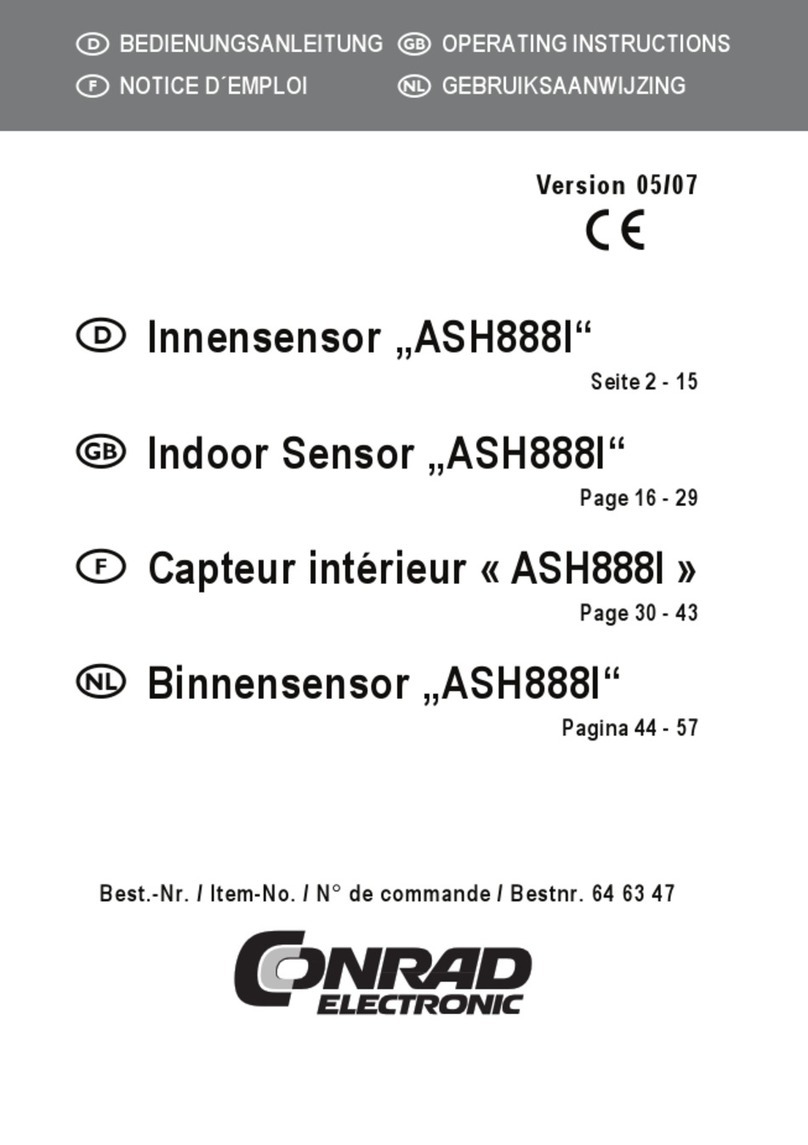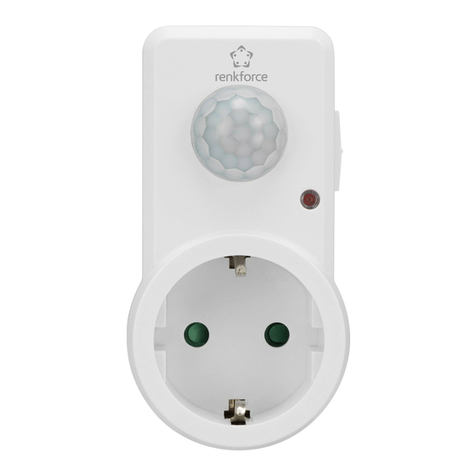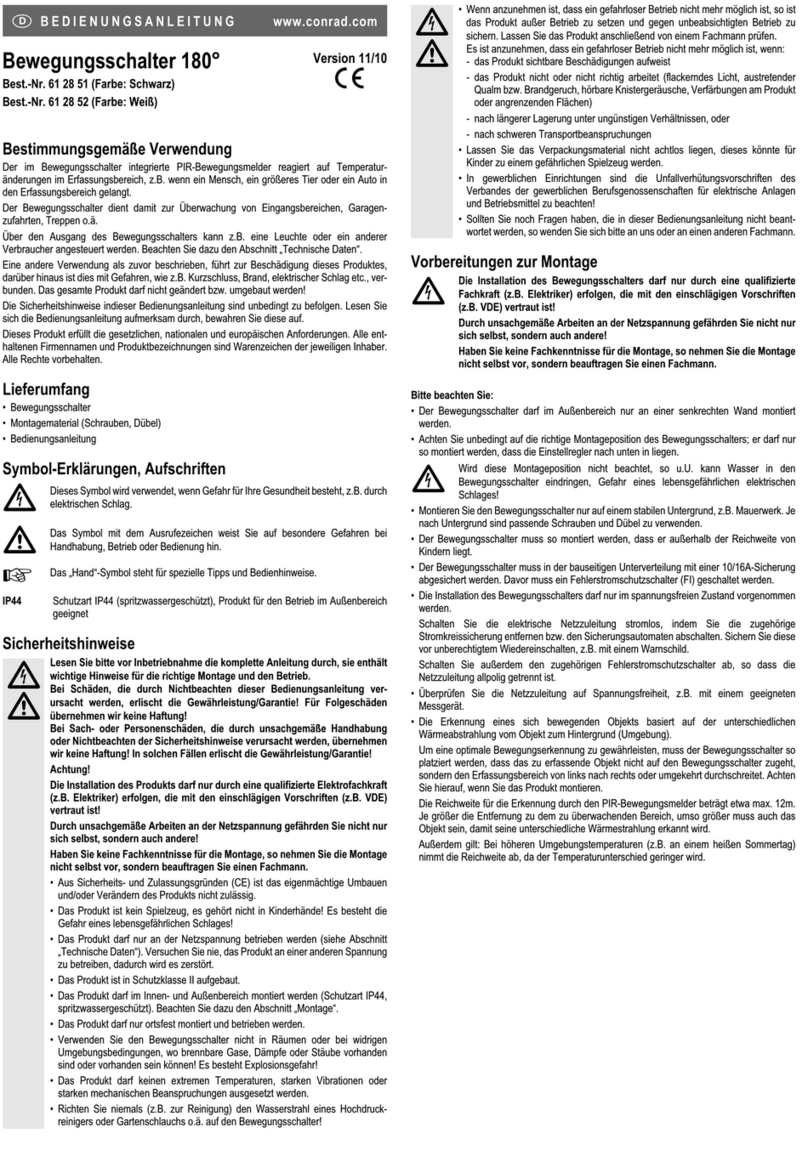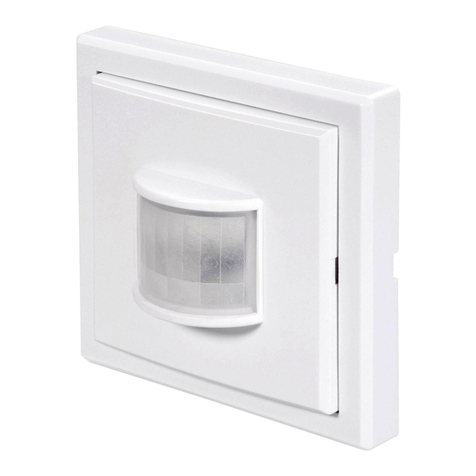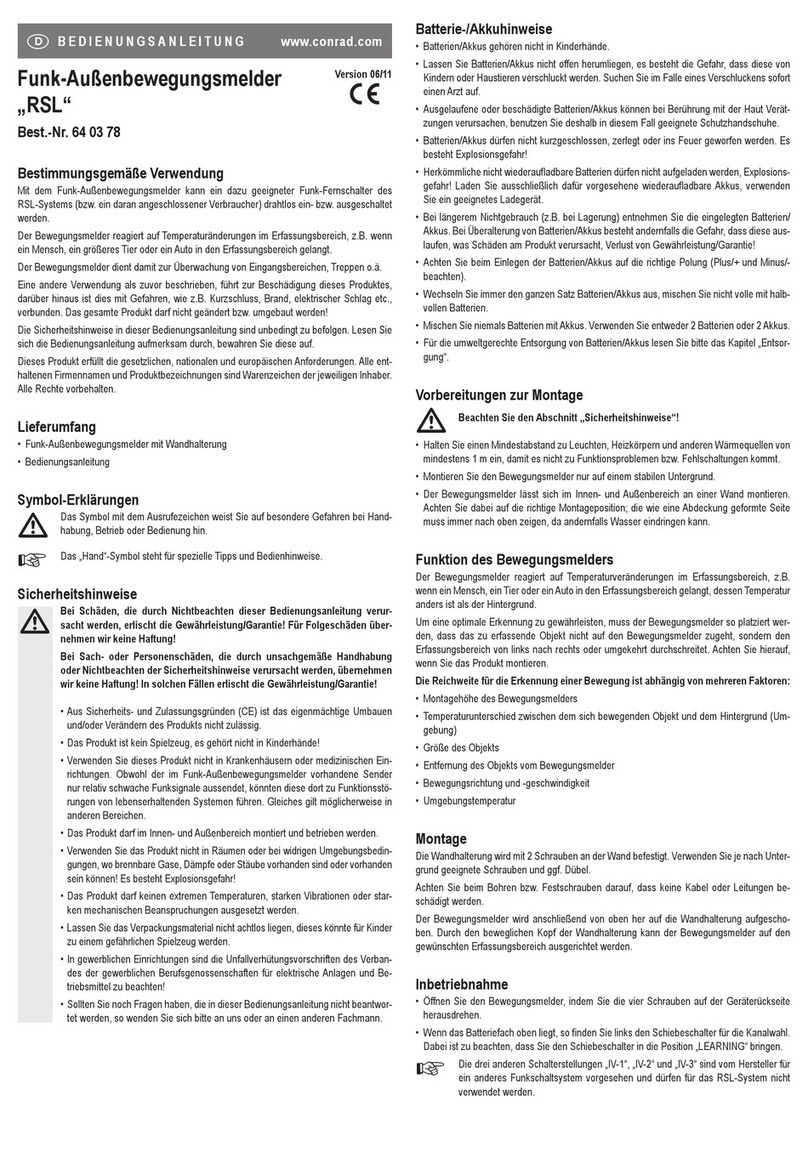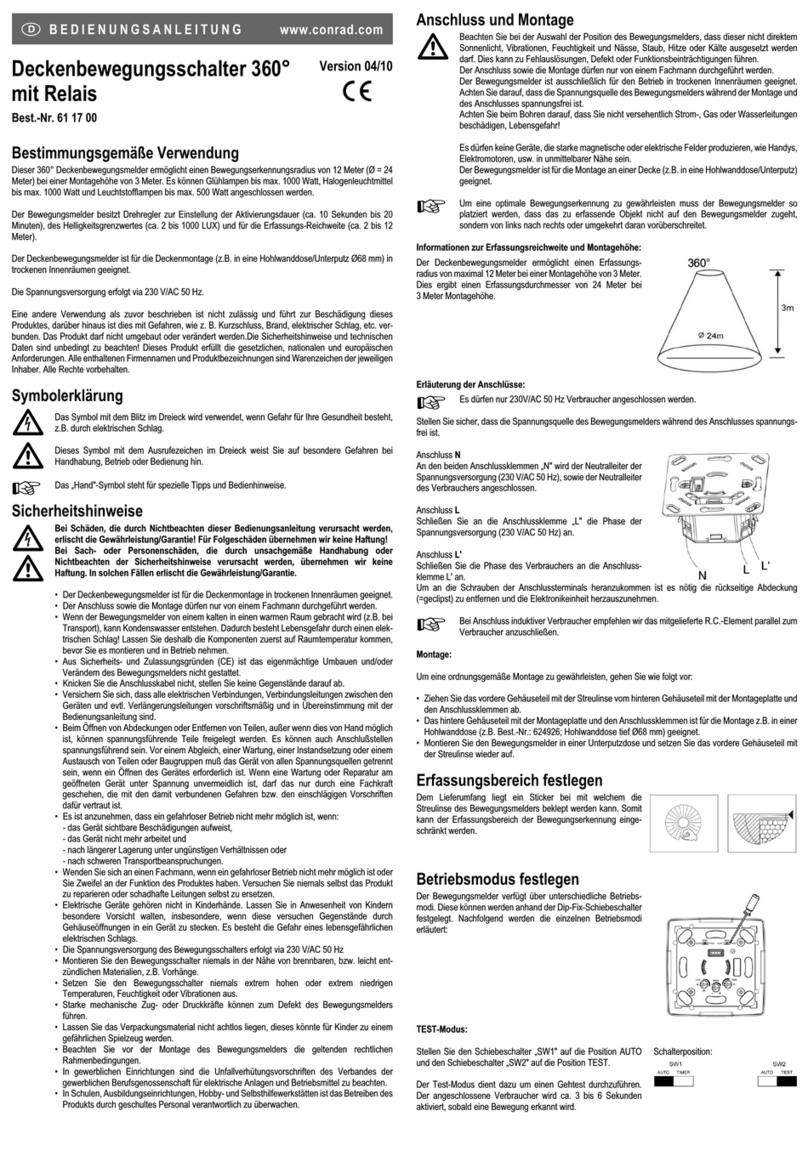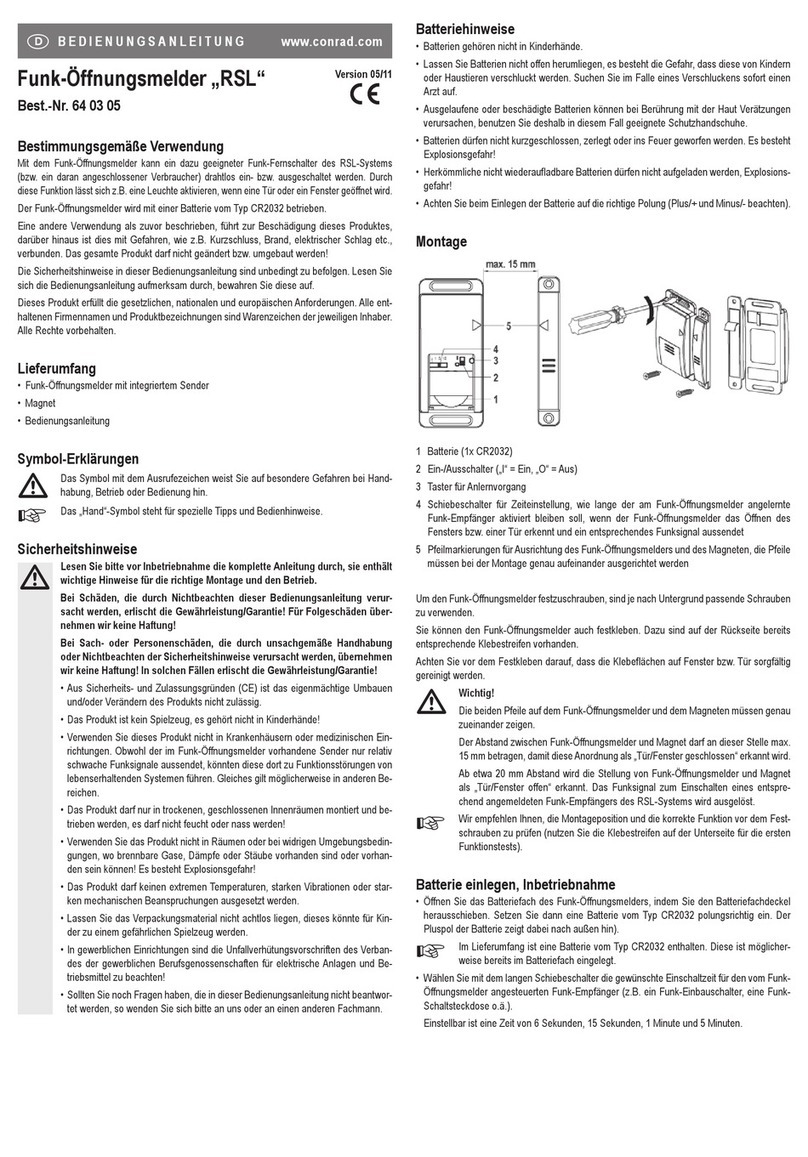6
• The product is only approved for installation and operation in dry and closed
indoor rooms. Make sure that the product does not get damp or wet.
• This product is not a toy and should be kept out of the reach of children.
• Do not leave packaging material lying around. This may become a danger-
ous plaything in the hands of children.
• Handle the product with care; knocks, blows or even a fall from a low height
can damage it.
b) Batteries and rechargeable batteries
• Keep batteries/rechargeable batteries out of the reach of children.
• When inserting the batteries/rechargeable batteries make sure that the polarity
is correct.
• Do not leave batteries/rechargeable batteries lying around as they could
be swallowed by children or pets. In such case seek immediate medical care.
• Leaking or damaged batteries/rechargeable batteries may cause acid burns,
if they come into contact with skin. Therefore, please make sure you use
suitable protective gloves.
• Make sure that batteries/rechargeable batteries are not short-circuited or
thrown into a fire. They might explode!
• Never take batteries/rechargeable batteries apart!
• Conventional batteries must not be recharged. They might explode!
• If the device is not used for a longer period of time (for example, when stored),
remove the inserted batteries/rechargeable batteries to prevent them from
leaking and causing damage.
It is possible to operate the door/window detector with recharge-
able batteries. However, due to the lower voltage (rechargeable
battery= 1.2V, battery = 1.5V) and the lower capacity, the period
of operation and the range are reduced. In some instances powering
with rechargeable batteries may not be possible when the door/
window detector sends a ‘battery empty’ message to the alarm
base station even when the batteries are full, therefore immedi-
ately generating a disturbance message.
Therefore, to ensure safe operation, only use high-quality alkaline
batteries.
